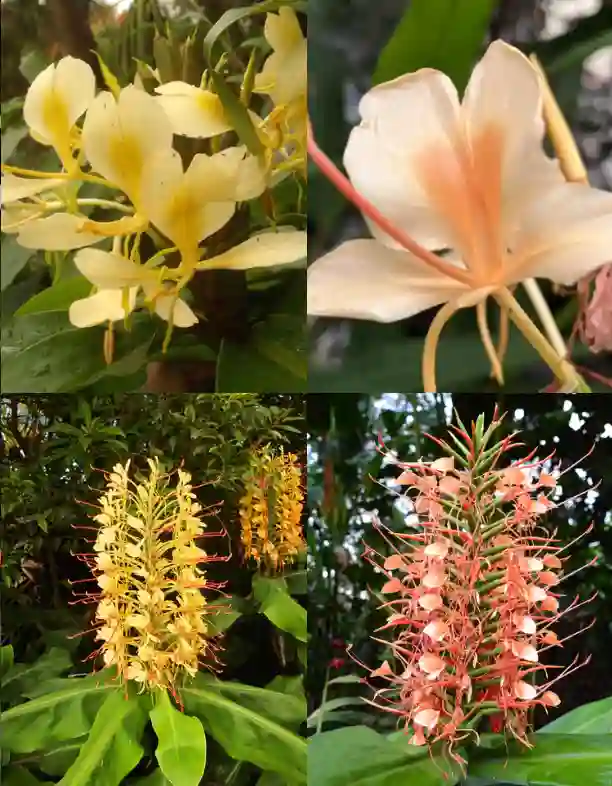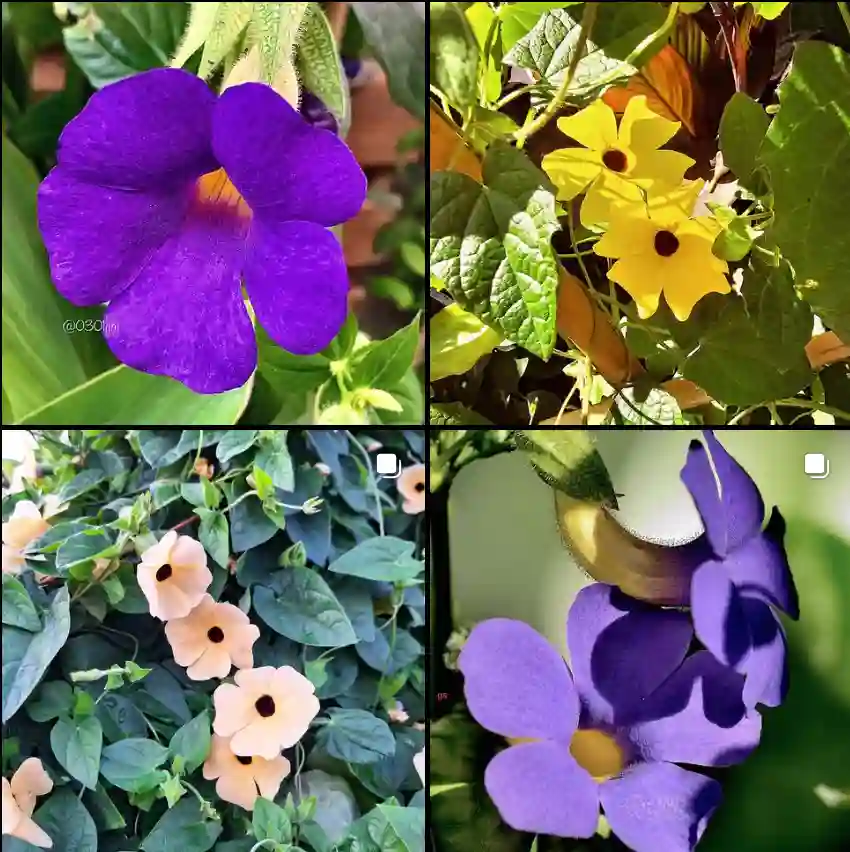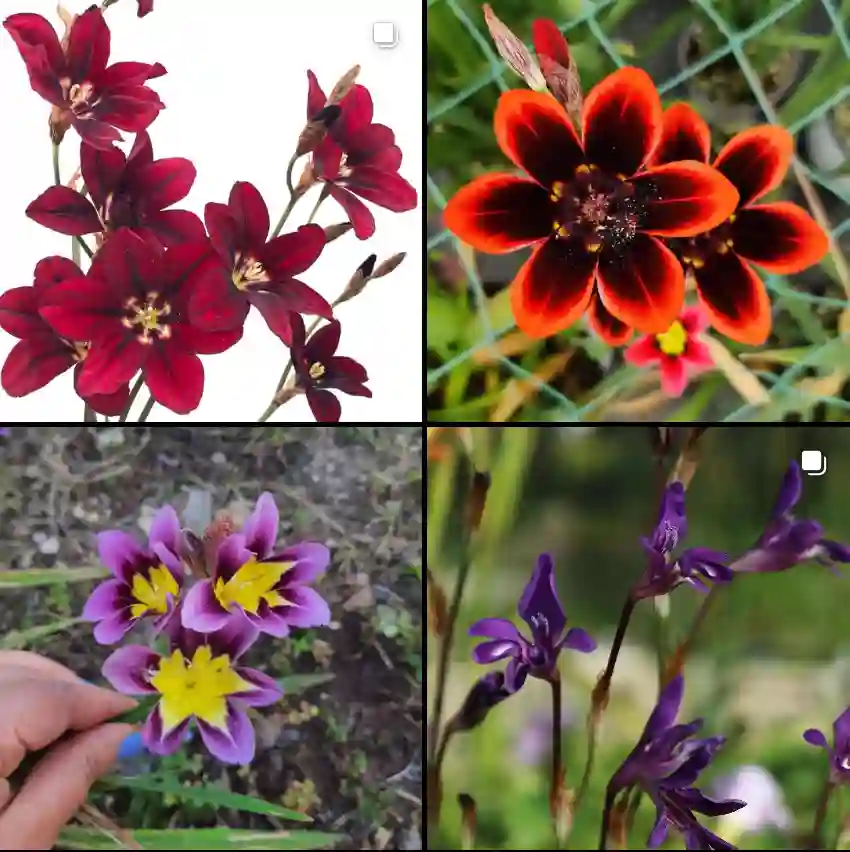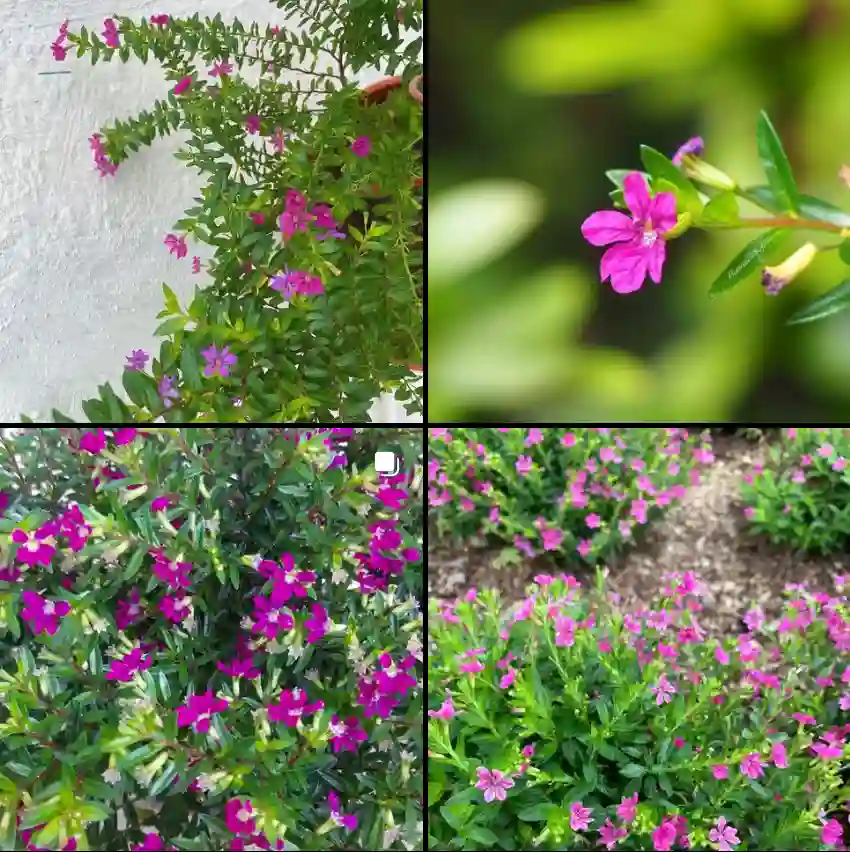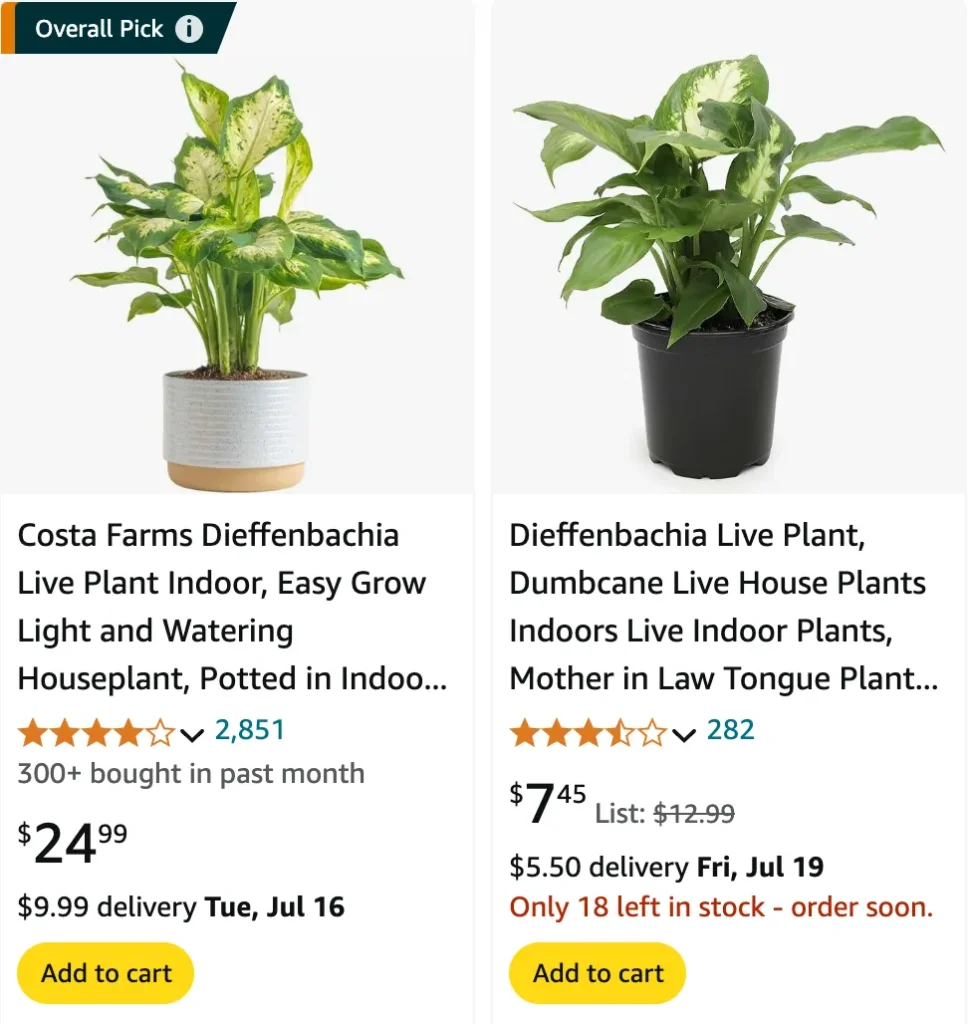
October 2 – Dieffenbachia
"Dieffenbachia, the dumb cane, represents October 2."
Dieffenbachia symbolizes adaptability and endurance. You thrive in various circumstances, demonstrating inner strength. Like its bold foliage, you are striking and resilient.
What is Dieffenbachia?
Hi, I’m Ferb Vu, and I’m here to talk to you about my favorite plant genus: Dieffenbachia from the Araceae family. These tropical plants, with their striking foliage and intriguing history, have captivated me for years. Native to the New World Tropics, Dieffenbachia has made its way into homes and hearts around the globe, and I’m excited to share my passion for them with you.
The Allure of Dieffenbachia
What draws me to Dieffenbachia is the sheer diversity within the genus. Each species boasts unique patterns and colors on its leaves, making them a visual feast. From the deep greens and creamy whites of Dieffenbachia seguine to the vibrant yellows and speckles of Dieffenbachia maculata, there’s a Dieffenbachia to suit every taste.
But it’s not just their beauty that fascinates me. Dieffenbachia also carries a rich history and cultural significance. Known by common names like “dumb cane” and “leopard lily,” these plants have been used for medicinal purposes and even played roles in folklore.
A Closer Look at Dieffenbachia Species
The Dieffenbachia genus is home to a variety of stunning species. Here are:
- Dieffenbachia aglaonematifolia Engl.
- Dieffenbachia antioquensis Linden ex Rafarin
- Dieffenbachia aurantiaca Engl.
- Dieffenbachia batistae O.Ortiz & Croat
- Dieffenbachia beachiana Croat & Grayum
- Dieffenbachia bowmanni H.J.Veitch
- Dieffenbachia brittonii Engl.
- Dieffenbachia burgeri Croat & Grayum
- Dieffenbachia cannifolia Engl.
- Dieffenbachia concinna Croat & Grayum
- Dieffenbachia copensis Croat
- Dieffenbachia cordata Engl.
- Dieffenbachia costata Klotzsch ex Schott
- Dieffenbachia crebripistillata Croat
- Dieffenbachia daguensis Engl.
- Dieffenbachia davidsei Croat & Grayum
- Dieffenbachia duidae (Steyerm.) G.S.Bunting
- Dieffenbachia elegans A.M.E.Jonker & Jonker
- Dieffenbachia enderi Engl.
- Dieffenbachia fortunensis Croat
- Dieffenbachia fosteri Croat
- Dieffenbachia fournieri N.E.Br.
- Dieffenbachia galdamesiae Croat
- Dieffenbachia gracilis Huber
- Dieffenbachia grayumiana Croat
- Dieffenbachia hammelii Croat & Grayum
- Dieffenbachia herthae Diels
- Dieffenbachia horichii Croat & Grayum
- Dieffenbachia humilis Poepp.
- Dieffenbachia imperialis Linden & André
- Dieffenbachia isthmia Croat
- Dieffenbachia killipii Croat
- Dieffenbachia lancifolia Linden & André
- Dieffenbachia leopoldii W.Bull
- Dieffenbachia longispatha Engl. & K.Krause
- Dieffenbachia lutheri Croat
- Dieffenbachia macrophylla Poepp.
- Dieffenbachia meleagris L.Linden & Rodigas
- Dieffenbachia mortoniana O.Ortiz & Croat
- Dieffenbachia nitidipetiolata Croat & Grayum
- Dieffenbachia obliqua Poepp.
- Dieffenbachia obscurinervia Croat
- Dieffenbachia oerstedii Schott
- Dieffenbachia olbia L.Linden & Rodigas
- Dieffenbachia paludicola N.E.Br. ex Gleason
- Dieffenbachia panamensis Croat
- Dieffenbachia parlatorei Linden & André
- Dieffenbachia parvifolia Engl.
- Dieffenbachia pittieri Engl. & K.Krause
- Dieffenbachia rodriguezii Croat & O.Ortiz
- Dieffenbachia seguine (Jacq.) Schott Plant FAQs: Dieffenbachia Seguine – Dumb Cane
- Dieffenbachia shuttleworthii W.Bull ex T.Moore & Mast.
- Dieffenbachia simoneae C.A.S.Bat.
- Dieffenbachia standleyi Croat
- Dieffenbachia tonduzii Croat & Grayum
- Dieffenbachia weberbaueri Engl.
- Dieffenbachia weirii J.Veitch f.
- Dieffenbachia wendlandii Schott
- Dieffenbachia williamsii Croat
- Dieffenbachia wurdackii Croat
Caring for Dieffenbachia
While Dieffenbachia plants are relatively low-maintenance, they do require specific care to thrive. Here are some key tips:
- Light: Dieffenbachia prefer bright, indirect light. Avoid direct sunlight, which can scorch their leaves.
- Water: Keep the soil consistently moist but not soggy. Allow the top inch of soil to dry out between waterings.
- Humidity: These tropical plants appreciate higher humidity levels. Consider using a humidifier or placing the plant on a tray of pebbles filled with water.
- Temperature: Dieffenbachia prefer temperatures between 65-80°F (18-27°C). Avoid cold drafts and sudden temperature changes.
- Toxicity: It’s important to note that Dieffenbachia contains calcium oxalate crystals, which can cause irritation and swelling in the mouth and throat if ingested. Keep these plants away from children and pets.
Is Dieffenbachia Toxic to Dogs?
Yes, Dieffenbachia is toxic to dogs, as well as cats and humans. The plant contains calcium oxalate crystals, which can cause irritation and swelling of the mouth, tongue, and throat if ingested. This toxicity is actually how it earned the name “dumb cane” because, in severe cases, it can cause temporary speechlessness. If you have pets, it’s crucial to keep this plant out of their reach or consider choosing a non-toxic alternative.
How Often to Water Dieffenbachia?
Watering Dieffenbachia correctly is key to keeping it healthy. I usually water mine when the top inch of soil feels dry to the touch. Overwatering can lead to root rot, which is a common issue with this plant. On the other hand, letting the soil dry out completely can stress the plant, causing the leaves to droop. During the growing season (spring and summer), I water more frequently, while in the cooler months, I scale back.
Why Are My Dieffenbachia Leaves Turning Yellow?
Yellowing leaves on a Dieffenbachia can be a sign of several issues. In my experience, the most common causes are overwatering, underwatering, or insufficient light. Overwatering is often the culprit, leading to root rot and yellow leaves. Ensure your plant has good drainage and avoid letting it sit in water. If underwatering is the issue, the leaves will often turn yellow and crispy. Adjusting the watering schedule usually solves the problem. Also, make sure your Dieffenbachia is getting enough indirect light, as too little light can also cause yellowing.
Do Dieffenbachia Flower?
Yes, Dieffenbachia can flower, though it’s relatively rare indoors. The flowers are small, greenish-white, and not particularly showy. In most cases, the plant is grown for its foliage rather than its blooms. If your Dieffenbachia does flower, you can choose to leave the flower on or prune it off to conserve the plant’s energy for leaf growth.
How to Prune Dieffenbachia?
Pruning Dieffenbachia is essential for maintaining its shape and promoting healthy growth. I usually prune mine in the spring by cutting back any leggy stems or yellowing leaves. To prune, I use clean, sharp scissors or pruners and make cuts just above a node (where a leaf meets the stem). This encourages new growth from the cut point, helping the plant stay bushy and full.
How to Make Dieffenbachia Bushy?
To make Dieffenbachia bushy, pruning is your best friend. Regularly trim back the stems to promote branching. When you cut above a node, the plant will respond by producing new shoots from that point. I also rotate the plant every few weeks to ensure even light exposure, which helps it grow more uniformly.
How to Cut Back Dieffenbachia?
If your Dieffenbachia has become too tall or leggy, cutting it back is a simple process. I’ve found that cutting the main stem back by about one-third to half works well. This not only controls the height but also encourages the plant to produce new growth at the base, resulting in a fuller appearance. Don’t be afraid to cut it back hard if needed—Dieffenbachia is resilient and will bounce back with proper care.
Can Dieffenbachia Grow Outside?
Dieffenbachia can grow outside in tropical or subtropical climates where temperatures don’t drop below 50°F (10°C). However, in temperate regions, it’s best kept as an indoor plant. If you do decide to grow it outside, ensure it’s in a shaded or partially shaded area to avoid direct sunlight, which can scorch the leaves.
Do Dieffenbachia Need a Lot of Light?
Dieffenbachia thrives in bright, indirect light. Too much direct sunlight can cause the leaves to burn, while too little light can lead to leggy growth and pale leaves. I keep mine in a spot where it gets filtered light through a curtain or in a bright room away from direct sunlight.
How Tall Do Dieffenbachia Grow?
Dieffenbachia can grow quite tall, reaching heights of up to 6 feet indoors under ideal conditions. In my home, I keep mine pruned to a manageable height of around 3 to 4 feet. This not only makes it easier to care for but also helps the plant maintain a bushy, compact shape.
Dieffenbachia vs. Aglaonema
Dieffenbachia and Aglaonema are often compared due to their similar appearance and care requirements. While both are easy to care for, Aglaonema is generally more tolerant of low light and less likely to develop yellow leaves. However, I find Dieffenbachia’s larger, more dramatic leaves more striking.
Dieffenbachia vs. Peace Lily
When comparing Dieffenbachia to Peace Lily, the main difference is in their watering needs and appearance. Peace Lilies have more pronounced flowering and tend to prefer consistently moist soil. Dieffenbachia, on the other hand, is more forgiving if you occasionally miss a watering.
Dieffenbachia vs. Pothos
Pothos is often recommended for beginners because it’s virtually indestructible. While Dieffenbachia requires a bit more attention, especially with watering, it rewards you with larger, more lush foliage. If you’re looking for a more dramatic statement plant, Dieffenbachia is the way to go.
Dieffenbachia vs. Dracaena
Both Dieffenbachia and Dracaena are popular indoor plants, but they have different growth habits. Dracaena tends to grow more slowly and has a more upright, tree-like appearance, while Dieffenbachia grows faster and can become quite bushy with proper care. I find Dieffenbachia to be more vibrant, but Dracaena is better suited for minimalist spaces.
Conclusion
Dieffenbachia is a beautiful and rewarding plant to grow, but like any plant, it has specific needs. By understanding these common FAQs and applying the right care techniques, you can enjoy a thriving, vibrant Dieffenbachia in your home. Whether you’re a seasoned plant parent or a beginner, this plant is sure to bring a touch of the tropics into your living space.
If i die, water my plants!
